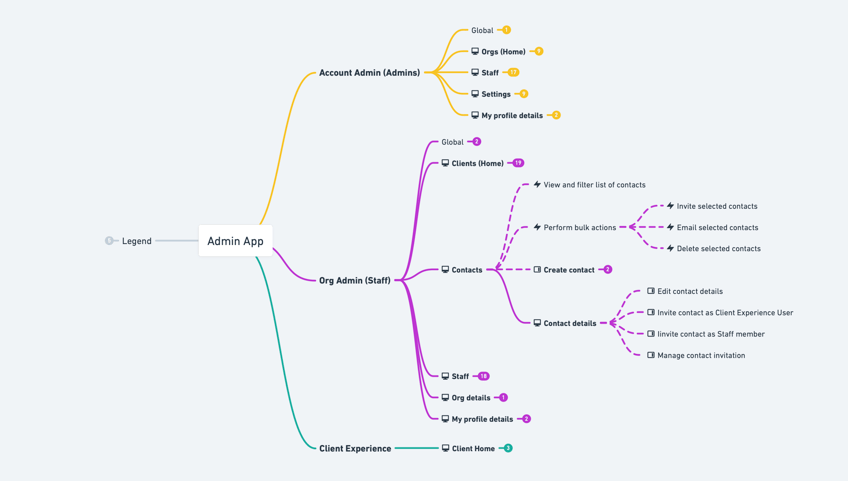Introduction
Route mapping is an activity that generates a lightweight URL schema of an app or website experience. We like to think of it as a UX blueprinting exercise in service to interface prototyping, application scaffolding, mock APIs, and stakeholder alignment (who can more easily picture the product and refine the ambition and scope with an artefact such as this).


Participants
Route mapping is a cross-functional affair at Thinkmill. A UX Designer typically covers the elements that would exist in a traditional IA artefact, but route maps also outline concerns like CRUD related user activities and API fundamentals, so including engineers in the activity generates the best outcomes.
The difference between a route map and a typical IA diagram
Our view is that defining an IA is a process best informed by synthesising multiple takes on a problem – conceptual, route-based, flow-based, etc. We’ve found that route maps let cross functional teams cover more surface area and detail in faster time. There are certainly instances where a standalone traditional IA artefact may also be worth creating, but we start from the route map first, and expand as required.
How to map routes
For a more detailed breakdown on how to setup a route map document see our article Route Map - a lightweight schema for defining a UX blueprint.

